Club Profile
 |
|
| Official club name: The Friendship Force of Saitama President : Noriko Miyoshi email : noriko207[ at-mark ]nifty.com Secretary : Keiko Hama email : hamachan_keiko[ at-mark ]yahoo.co.jp *Note : please replace [ at-mark ] to @, so you can get the real email address Closest major airport : Narita(Tokyo)Airport & Haneda Airport Transportation cost between Narita airport and our city: 2,800 yen (about90 minutes) Transportation cost between Haneda airport and our city: 1,540 yen (about60 minutes) The maximum number of ambassadors : 17 |
|
| About the club: Saitama club officially started in 1992, when it became independent from Tokyo club. We have 57 members now. Many of our members live in Saitama City, where most of the club activities are held. Some live in other cities of Saitama Pref., while others live in the wider Tokyo Metropolitan Area. The club members are eager to meet friends both old and new, and learn about their cultures. | |
| About the region: Saitama is located next to Tokyo, capital of Japan. Saitama has good access
to Tokyo, a rich traditional culture and a quiet environment. The population
of Saitama City is 1.3 million, and the population of Saitama Prefecture
is about 7.3 million. The abundant nature and rich tradition of Saitama have helped to develop numerous special products. |
|
| About the exchange: Since our club was established in 1992, we have enjoyed many outbound and inbound exchanges. We prefer to host in spring or fall as those are our beautiful seasons in Saitama. Ambassadors can use a direct/non-stop bus from the airport to get to Saitama. During each exchange we usually have a welcome party and farewell party. Ambassadors will have an opportunity to see the sights of Tokyo, and experience Japanese culture like flower arrangement, tea ceremony, traditional Japanese music and trying on kimono. We often arrange a bus trip to scenic spots like Nikko, too. | |
| Hikawa Shrine: Hikawa Shrine in Saitama city has a history of over 2,400 years. It is one of the oldest shrines in Japan. During New Years, many people come to visit the shrine. In addition, this shrine has a long history of honouring the Emperor of Japan. The messenger of the Emperor comes on his behalf. |
|
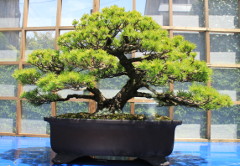 |
BONSAI VILLAGE: Bonsai, which has been used in the international language of “Bonsai” is one part of Japanese culture. It is a tradition form of art that expresses scenery of time and space, the landscape of water and it seeks for beauty beyond natural appearances. The deep sensitivity to the changes of each season, the kindness and aesthetic feelings of life are condensed. Bonsai has a long history and is highly appreciated overseas. |
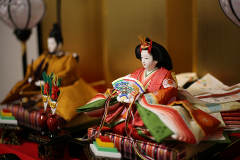 |
HINA DOLLS: During the Heian era (794-1192 AD) is it said that a young princess of the palace players with dolls made from paper, cloth and grass. The dolls were used to scare off evil spirits. Iwatsuki ( in Saitama City ) is the place where the dolls are still being made. It is called “Dolls Town”, |
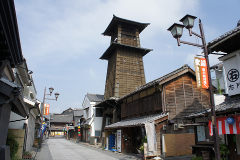 |
KAWAGOE: Kawagoe City is located in the southern part of Saitama Prefecture. It is lined with old Kura-zukuri buildings and it has a lovely streetscape. In the Edo Period, the Kawagoe road and Shin-Kashi river were both opened and closed when it was under the direct control and the Shogunate. At that time, it was called “Koedo”. |
| THE RAILWAY MUSEUM: The Railway Museum preserves the heritage and the materials related to the railways in Japan and also, it collects data and conducts research in this field. We will see the changes of the railway system as a “history museum” that tells about the history of the industry with actual train compartments and backgrounds of each period. |
|
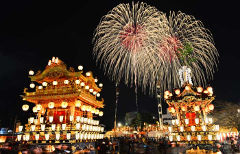 |
CHICHIBU: The Chichibu Night Festival is in the northwestern part of Saitama Prefecture and it is registered as an Intangible Cultural Heritage event at UNESCO. It is an annual festival of the Chichibu Shrine and it is held from December 1st to the 6th every year. It has a history of over 300 years and it is known nationwide for drawing of floats decorated with lanterns and the fireworks display. |
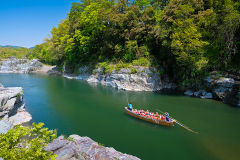 |
NAGATORO: Nagatoro is located in the northwestern part of Saitama Prefecture. It is a tourist destination surrounded by the beauty of nature. “Toro” is name of the place where the water is deep and it flows quietly. This is why it is called Nagatoro. The scenery in the area is pleasing to the eyes of tourists going down by boat. |
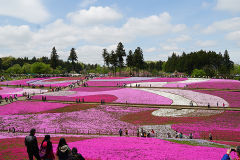 |
HITSUJIYAMA PARK: Shibazakura No Oka means “flower patchwork”. They are planted by combining various colours and shibazakura on the slopes of Mt. Buko. |
